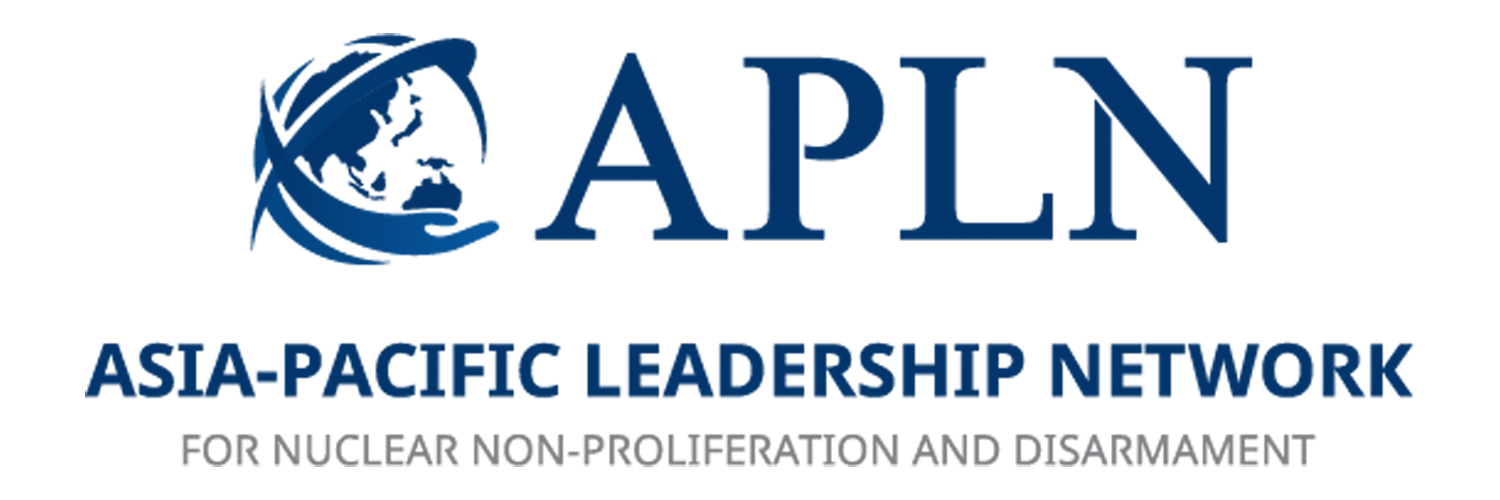APLN Newsletter (8 May 2020)
Dear members and colleagues,
Greetings from APLN! We welcome you to our bi-weekly newsletter. You will find below APLN’s and Members’ activities as well as helpful references from our communities. We want this newsletter to be valuable for you, so please share with us feedback and suggestions to improve.
APLN’s Activities
APLN has added new videos to our YouTube Channel. Two videos from the APLN-KNDA’s Joint Conference (part of a series) on “Denuclearization of North Korea and Geo-Economic Opportunities and Challenges” are now accessible.
Thomas Biersteker from the Graduate Institute discusses sanctions in “What Exactly Are the Sanctions on North Korea?” and “Sanctions Alone are Not Enough”. Biersteker claims that UN sanctions on the DPRK are the most extensive UN sanctions regime in place today. The scope of these sanctions are large because they target individuals and economic and non-economic sectors, and affect the entire populace in some respects. Unlike the case of Iran, UN sanctions on the DPRK are important elements since they are enforced by both Russia and China, albeit inconsistently. However, Biersteker believes that the American “maximum pressure” strategy has reached the limits of its effectiveness, and now faces the erosion of consensus in the UN. A few solutions are offered, which would include the relaxing of voluntary measures, such as caps on diplomatic staff or the creations of exemptions for fishing rights or the creation of a safe banking channel for humanitarian goods; temporary suspension of certain sanctions, in the case of individual listings or sectoral measures; and incentives for infrastructure investment, regional banks, or IFIs.
We ask all members to support, subscribe, and share our YouTube channel amongst colleagues and friends.
Members’ Activities
The APLN Secretariat is pleased to share with you our Vice-Chair and Executive Director Chung-in Moon’s special interview with Arirang News Chief Anchor Connyoung Moon. It has been two years since the April 27th Summit at Panmunjeom. As such, they reflect on the last two years since the summit; look forward to the next two years in inter-Korean relations and North Korea and the U.S. ties; and discuss speculations on Kim Jong Un’s health. The interview can be viewed here: [Arirang Special] April 2018 Inter-Korean Summit: Two Years On. The video is also accessible on APLN’s YouTube Channel in the section on “Members’ Activities”.
Rakesh Sood’s op-ed piece in The Hindu,“At The Edge of a Nuclear Arms Race” was published on April 27th. It brings to the attention the recent claims that Russia and China have been conducting tests with nuclear yield in violation of the CTBT agreement, and how now that the U.S.’s unipolar chapter is over, these tests fuel competition between the superpowers. With the New START expiring next year, there is no telling whether a new nuclear arms race is underway.
In “How Many Intensive Care Beds Will a Nuclear Weapon Explosion Require?” issued by The Bulletin of the Atomic Scientists on April 28th, Tom Sauer and Ramesh Thakur explore the potential scenario of a nuclear cataclysm, comparing it to the recent coronavirus pandemic. No country is and can ever be prepared to cope with the toll of a nuclear war, as proven by the shortage of ICU beds already experienced by nations affected by the pandemic. The authors affirm that the COVID-19 emergency is a striking validation of the Humanitarian Initiative: it is in the interest of every country that nuclear weapons be never used and be eliminated altogether.
References
On April 29th, 2020, Soo Kim wrote for Nikkei Asian Review, “If Kim Jong Un Dies, Expect Nuclear Weapons To Ramp Up”. She lays the prospects of a post-Kim Jong Un North Korea. With increased uncertainties, the early stage of responses by the U.S. is likely to establish the tone of further approaches. Kim suggests the alternative approach of nonresponse to deal with provocations from Pyongyang, and warns of possible Chinese meddling in U.S.—North Korea relations.
On April 29th, 2020, Defence News published Dale Anderson’s commentary “Why We Need Better Science To Pinpoint Small, Underground Nuclear Tests” where he argues for better physics and computer models to analyze seismic activities related to underground nuclear testing. Data collection is scarce but with better mathematics it is possible to correlate and study it, which will give a more accurate grasp of an adversary’s capabilities and guide government response.
Anadolu Agency published a short article on the Daily Sabah titled “Russia Threatens U.S. of ‘Nuclear Response’ In case of Ballistic Missile Attack” on April 29th, 2020. In response to a recent report by the U.S. Department of Defense on deploying a low-yield ballistic missile warhead, Russian Foreign Ministry spokeswoman Maria Zakharova stated that any attack using a U.S. submarine-launched ballistic missile will be considered a foundation for retaliatory use of nuclear weapons by Russia.
Minnie Chan wrote an article titled “Chinese Navy Puts Two New Nuclear Submarines into Service” published by the South China Morning Post on April 29th, 2020. According to Chinese military sources, two new upgraded nuclear-powered submarines have gone into service in time for the navy’s 71st anniversary. The Jin-class subs are the latest in a long list of weapons added to the navy over the last year.4
The article “Trump Could Take The Lead Off The World’s Largest Nuclear Stockpiles” appeared on Axios on April 30th, 2020. Dave Lawler gives a clear picture of where things stand in regard to the expiration of New START: Russia’s and China’s position, Trump’s concerns and preconditions and the relative comments from the experts.
Defense News published an article by The Associated Press on April 29th, 2020, titled “Russia Slams U.S. Arguments for Low-Yield Nukes.” The U.S. State Department recently argued that fitting low-yield nuclear warheads to submarine-launched ballistic missiles would help counter potential new threats from Russia and China. However, Russian Foreign Ministry spokeswoman Maria Zakharova countered the argument by stating that U.S. deployment of low-yield warheads is a destabilizing move that would result in “lowering the nuclear threshold”.
On April 30th, 2020, RT published an article written by Nebojsa Malic titled “U.S. Push for Low-Yield Nukes Makes Atomic War More Likely as Russia Will Retaliate with Full Force, Moscow Says.” He argues that the root of the discrepancy between the U.S. and Russia’s views regarding low-yield nukes is a fundamental misunderstanding. The U.S. is basing its arguments not on the actual Russian doctrine or behavior, but on mistaken beliefs as to what those might be.
Alan Macleod wrote for MPN News an article on May 1st, “Experts Warn of New Nuclear Arms Race After Trump Signals US Withdrawal From START Treaty”, where he cites among other sources the statement recently released by Rose Gottemoeller and Anatoly Antonov, the two diplomats who led the negotiating team for START. They urge the U.S. to consider the weak conditions of the international system as proved by the recent pandemic, and ensure that a nuclear escalation never happens.
Deutsche Welle released “Germany: SPD to Withdraw US Nuclear Arms Stokes Debates” on May 2nd, 2020 by Timothy Jones. The article informs of the recent disagreements within the German parties about the withdrawal of U.S. nuclear weapons on German soil.
Tushkar Shirodkar’s article, “Chinese Nuclear Tests, Should India Upgrade Its Nuclear Arsenal Too?” was published by the Indian Defence Research Wing on May 2nd, 2020. India has relied on supercomputers to simulate nuclear explosions of new-age nuclear weapons developed for its missile program. However, many former Indian nuclear scientists have been urging the government to test newer nuclear weapons in real-life conditions, like China, to avoid catastrophic failure if they were ever to be used in a nuclear war.
An analysis of recent investment trends in Japan published by Kyodo News on May 3rd shows how a number of financial institutions are steering clear of investing and protracting loans to companies involved with nuclear weapons and missiles, citing rising criticism internationally on such association as a reason for their skepticism. Some of the responders even openly backed the Treaty on the Prohibition of Nuclear Weapons, as reported in “16 Japan Lenders Refrain From Investing in Nuke-Linked Companies”.
On May 4th, the American Nuclear Policy Initiative, coordinated by Global Zero, launched its new report on “Blundering Toward Nuclear Chaos: The Trump Administration After Three Years”. This report includes a collection of analyses on topics such as Iran, North Korea, deterrence with Russia, the state of the global nonproliferation regime, nuclear modernization, nuclear power and nuclear security. In addition, the report features a summary analysis endorsed by a set of ANPI members that lays out the major shortcomings of the current U.S. approach to managing nuclear issues, including a lack of realistic goals, poor policy decisions, no working policy implementation process, the denigration of expertise within the USG and the erosion of proven tools for managing nuclear issues (including arms control, alliance management, etc). The summary conclusion is that all of the nuclear challenges facing the United States—including those inherited by President Trump and those of his own making—have gotten worse over the past three years.
The Hill published an opinion piece titled “Time to Restart Nuclear Arms Negotiations with Russia” written by John Fairlamb on May 3rd, 2020. Fairlamb argues that the Trump administration should immediately accept Russia’s offer to extend the New START Treaty because if it is permitted to expire in February 2021, there will be no limits or inspection regimes on Russian strategic systems. He also suggests that the New START should be extended at a lower level of 1,000 deployed warheads from the currently authorized 1,550.
On May 7th, 2020, “U.S. Must Move Ahead with Work on Nukes, Says Nuclear Security Boss” by Susan Montoya Bryan highlights the National Nuclear Security Administrator Lisa Gordon-Hagerty’s call to speed the production of key components for the U.S.’s nuclear arsenal despite difficulties caused by the coronavirus. With a deadline of 2030, plutonium pit production is propelled in the Los Alamos National Laboratory in New Mexico and the Savannah River Site in South Carolina.
“Critiquing the State Department’s Nuclear Posture Clarification” by George Perkovich, published on May 6th, clarifies ambiguities in American nuclear policy by questioning the possibilities of failure in deterrence. Perkovich explains that non-nuclear causes of “havoc” could be exemplified through cyber attacks that would make it sensible and legal for the U.S. to respond by using nuclear weapons. In addition, the lack of accurate targets would make it difficult to determine whether weapons would stabilize or destabilize and escalate and de-escalate nuclear exchanges. Thus, a case for mitigating high-yield strategic weapons in the U.S. and Russia is made.
APLN asks members and colleagues to send us your recent activites or references from your respective countries to share with all those involved. Please send us any updates or resources to our email address at apln@apln.network.
Thank you.
With warm regards,
The APLN Secretariat
Asia Pacific Leadership Network
102 Sajik-ro, Jongno-gu
Seoul, Republic of Korea (03169)
Tel: +82-2-2135-2170

